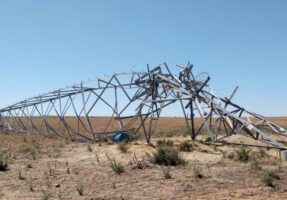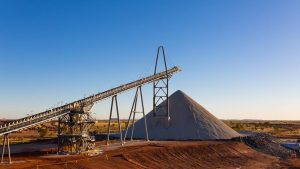A new survey finds a sharp drop in large-scale integrated projects to capture CO2 from energy systems and bury it underground. This drop from 75 projects to 65 over the past year is yet more evidence that we shouldn’t expect large-scale deployment of carbon capture and storage (CCS) before the 2030s at the earliest, nor expect that CCS would provide more than 10% of the answer to the carbon problem by 2050.
… the technology for capturing carbon has not been proved to work on a commercial scale, either in the United States or abroad. The Energy Department canceled its main project demonstrating the technology in 2008.
As that story notes, one major CCS demonstration at a West Virginia coal plant was shut down in 2011 because “it could not sell the carbon dioxide or recover the extra cost from its electricity customers, and the equipment consumed so much energy that, at full scale, the project would have sharply cut electricity production.” D’oh!
The new survey itself concludes:
The slower than anticipated progress of CCS projects into construction during the past three years reflects the difficulty for project proponents to address the financial and commercial challenges inherent in CCS integration. This is expected to continue in the coming year.
It finds that “while C.C.S. projects are progressing, the pace is well below the level required for C.C.S. to make a substantial contribution to climate change mitigation.”
Back in 2011, I wrote three pieces for The Economist in an online debate on why CCS can’t possibly be a stand-alone solution and why we are a long way away from CCS even making a substantial contribution:
- Climate-Control Policies Cannot Rely on CCS
- Large-Scale CCS: Feasibility, Permanence and Safety Issues Remain Unresolved
- Economist Debate Concludes /li>
Let’s start with “the daunting scale of the challenge,” as Vaclav Smil explained in “Energy at the Crossroads“:
“Sequestering a mere 1/10 of today’s global CO2 emissions (less than 3 Gt CO2) would thus call for putting in place an industry that would have to force underground every year the volume of compressed gas larger than or (with higher compression) equal to the volume of crude oil extracted globally by [the] petroleum industry whose infrastructures and capacities have been put in place over a century of development. Needless to say, such a technical feat could not be accomplished within a single generation.”
No doubt that’s why the pro-CCS debater, Barry Jones wrote “The international community aims to deliver 20 demonstration projects by 2020, applying CCS to various kinds of industrial sectors. The idea is that CCS then becomes a commercial reality and begins to make deep cuts in emissions during the 2030s.”
Ahh, if only the climate had two decades to wait….
CCS simply hasn’t yet proven to be practical, affordable, scalable, and ready to be ramped up rapidly.
In 2009, Harvard’s Belfer Center for Science and International Affairs published a major study, “Realistic Costs of Carbon Capture“. The paper concludes that first-of-a-kind CCS plants will have a costs of carbon abatement of some “$150/tCO2 avoided (with a range $120-180/tCO2avoided), excluding transport and storage costs.”
This yields a “levelised cost of electricity on a 2008 basis [that] is approximately 10 cents/kWh higher with capture than for conventional plants/” So pick your favorite price for new coal plants—in 2008, Moody’s said it was about 11 cents/kWh—and add 10 cents and you get over 20 cents/kWh.
Yes, one can imagine CCS at existing coal plants—extracted from the flue gas post-combustion—but that technology is even further from commercialisation at scale and necessarily involves capturing CO2 that is far more dilute. As the US Department of Energy reported:
“Existing CO2 capture technologies are not cost-effective when considered in the context of large power plants. Economic studies indicate that carbon capture will add over 30% to the cost of electricity for new integrated gasification combined cycle (IGCC) units and over 80% to the cost of electricity if retrofitted to existing pulverised coal (PC) units. In addition, the net electricity produced from existing plants would be significantly reduced—often referred to as parasitic loss—since 20-30% of the power generated by the plant would have to be used to capture and compress the CO2.”
As I wrote in the Economist, if the Russian government said it was sequestering 100 million tons of CO2 in the ground permanently, and wanted other countries to pay it billions of dollars to do so, would anyone trust it? No. The potential for fraud and bribery are simply too enormous. But would anyone trust China? Would anyone trust an American utility, for that matter? We need to set up some sort of international regime for certifying, monitoring, verifying and inspecting geologic repositories of carbon—like the UN weapons inspections systems. The problem is, America has not been able to certify a single storage facility for high-level radioactive waste after two decades of trying and nobody knows how to monitor and verify underground CO2 storage. It could take a decade (or more) just to set up this system. We haven’t even started.
Then we have the leakage issue. Even a very small leakage rate of well under 1% a year would render the storage system all but useless as a “permanent repository”.
Equally worrisome, a Duke University study found: “Leaks from carbon dioxide injected deep underground to help fight climate change could bubble up into drinking water aquifers near the surface, driving up levels of contaminants in the water tenfold or more in some places.” What kind of contaminants could bubble up into drinking water aquifers? The study noted: “Potentially dangerous uranium and barium increased throughout the entire experiment in some samples.”
This problem may not turn out to be fatal to CCS, but it might well limit the places where sequestration is practical—either because the geology is problematic or because the site is simply too close to the water supply of a large population.
Public acceptance (aka NIMBY) has already been a huge problem for CCS. Public concern about CO2 leaks—small and large—has impeded a number of CCS projects around the world. The concerns should be taken seriously, as BusinessWeek reported in 2008:
“One large, coal-fired plant generates the equivalent of 3 billion barrels of CO2over a 60-year lifetime. That would require a space the size of a major oil field to contain. The pressure could cause leaks or earthquakes, says Curt M. White, who ran the US Energy Department’s carbon sequestration group until 2005 and served as an adviser until earlier this year. ‘Red flags should be going up everywhere when you talk about this amount of liquid being put underground.’ ”
I wonder who will be insuring those repositories against accidents? Probably the same folks who ensure nuclear plants against accidents….
And concerns about earthquakes should be taken seriously, as Stanford University researchersconcluded in 2012:
We argue here that there is a high probability that earthquakes will be triggered by injection of large volumes of CO2 into the brittle rocks commonly found in continental interiors. Because even small- to moderate-sized earthquakes threaten the seal integrity of CO2 repositories, in this context, large-scale CCS is a risky, and likely unsuccessful, strategy for significantly reducing greenhouse gas emissions.
So, sure, pursue R&D and demonstration of CCS, and hope it can be, say, 10% of the solution by 2050. But as the International Energy Agency has concluded“:
“On planned policies, rising fossil energy use will lead to irreversible and potentially catastrophic climate change … Delaying action is a false economy: for every $1 of investment in cleaner technology that is avoided in the power sector before 2020, an additional $4.30 would need to be spent after 2020 to compensate for the increased emissions.”
This article was originally published on Climate Progress. Reproduced with permission










